

The Second Century at McMurry University Strategic Plan
2023–2030




2023–2030

The Second Century is the strategic plan for McMurry University that will provide direction as the University embarks upon its second century. Specifically, the plan will inform decision-making during the years 2023–2030. It identifies several macrotrends and demographics, the value proposition of higher education, and the challenges of maintaining financial stability—permeating the higher education environment in 2023.
The plan describes the planning process, the McMurry Identity, Vision 2030, and The Second Century Strategic Pillars, upon which all activity for the next seven years will be focused. These five pillars are:
I. Enhance institutional self-esteem and community perception by increasing the frequency and quality of internal and external messaging.
II. Advance academic program development that is mindful of vital skills that are needed for the twenty-first century workplace and will lead to the professional success of McMurry graduates. These skills include oral communication, critical thinking, ethical judgment, working effectively in teams, working independently, self-motivation, written communication, servant leadership, cultural competence, and real-world application of skills and knowledge.
III. Recruit, retain, and graduate a diverse student body by developing engaged learners with the propensity to connect proactively in their communities.
IV. Recruit, retain, advance, and develop a diverse and engaged McMurry faculty, staff, and administration by investing in employee talent attraction, alignment, and a culture of belonging.
V. Enhance McMurry’s financial stability and long-term viability through investment, development, and acquisition of traditional and alternative revenue streams, as well as through intentional acquisition and management of its physical and technical resources.
Each strategic pillar iinclude tactics to achieve its stated objective. The appendices provide the McMurry mission statement (see Appendix A), the metrics of success to monitor the progress toward the strategic initiatives, and a timeline for implementation. Given the significant growth of the Hispanic population in Texas, a macrotrend, and the desire to emphasize McMurry’s status as a Hispanic-Serving Institution, the University has identified an external metric—the Seal of Excelencia—as a valuable designation to attain. The Seal of Excelencia (see Appendix B) is a national certification framework for colleges and universities to become institutions where Latino students thrive, by striving to look beyond enrollment and intentionally serving these students’ needs.
In order to achieve Vision 2030 and the accompanying The Second Century Strategic Pillars, the McMurry community must commit to the creation of a philanthropic spirit and the discipline to implement the key actions outlined above and described in the following narrative and appendices.
One-hundred years ago, Dr. James Winford Hunt had a vision of establishing a college in West Texas. According to the history of McMurry College, Pride of Our Western Prairies: McMurry College 1923-1988:
[Hunt] wanted that college to be a Methodist college. He wanted it to represent academic excellence. He wanted the college to be able to prepare young men and women for lifetime work. He wanted the college to instill an appreciation of our society’s cultural heritage. He wanted a college which would prepare young men and women to be human beings who could function effectively in society, guided by the imperatives and the moral responsibilities taught by the church. Dr. J.W. Hunt wanted to make real at this college Charles Wesley’s hope that knowledge and vital piety would be combined. In that spirit, Hunt and his associates went about the work of establishing a school in Abilene. They named it in honor of the presiding bishop of the area, Bishop William Fletcher McMurry (Downs and Sledge, forward).
A century after its founding, the school has evolved from a college to a university; grown from two-hundred students to over twelve-hundred students; educated over eleven-thousand alumni; built a campus with academic buildings, laboratories, a student center, a library, student residence halls and apartments, and athletic facilities; accumulated an endowment of over $100 million; and served the community, state, nation, and world.
Now McMurry University is embarking on its second century.
The previous strategic plan McMurry Momentum guided the University through its tenth decade. The McMurry University Board of Trustees approved the plan in fall 2014 with its duration through the institution’s centennial in 2023. It highlighted student success, recruitment, retention, graduation, and financial stability and included the metrics of success and a timeline to guide its implementation. In 2017, the board of trustees approved a new University mission statement (see Appendix A) that will usher the University into its second century. After reviewing the metrics of success, it is clear that significant progress has been made on the following: enrollment and retention, the digital learning initiative, the firstyear experience, new academic programming, the revision of the general education curriculum, the War Hawk Student Success Center, grant acquisition, faculty salary competitiveness, financial stabilization, building of the endowment, new
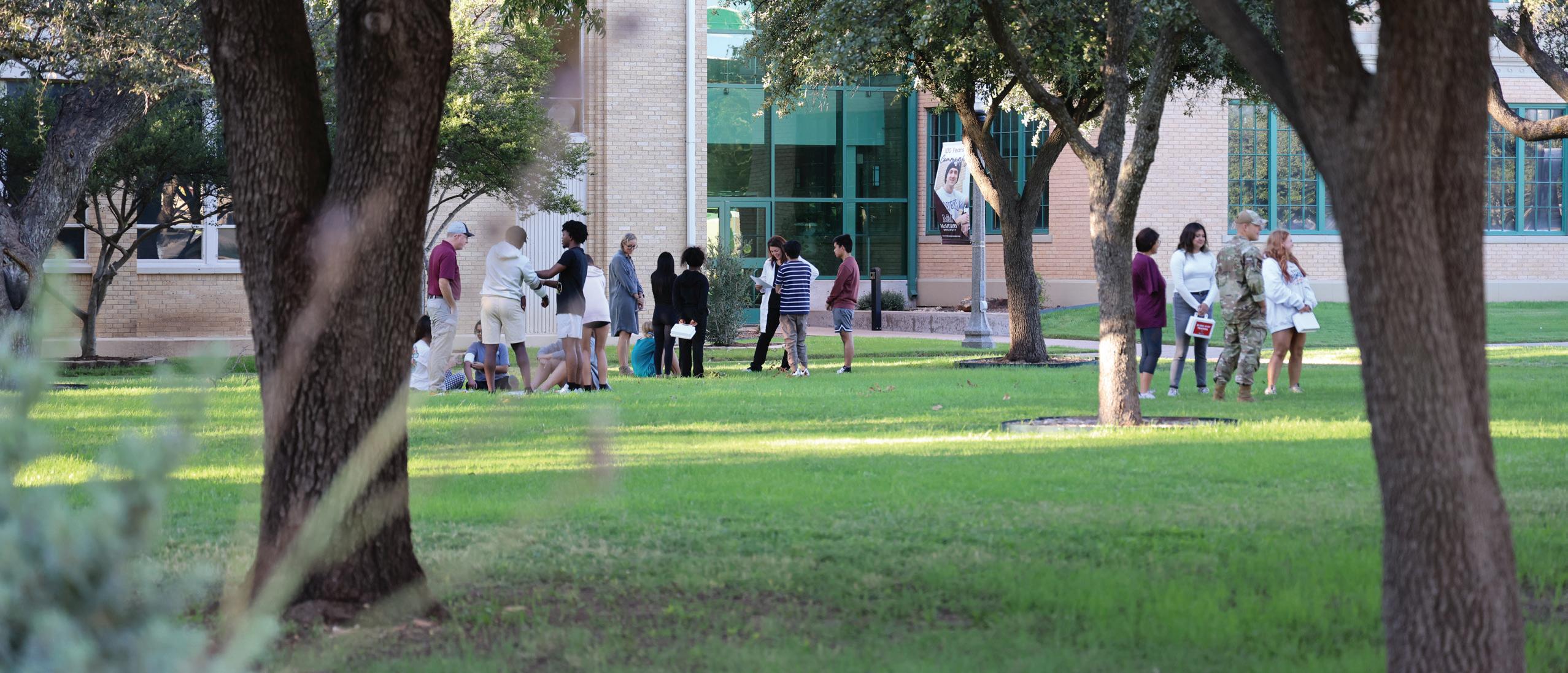
construction after modification of the Campus Master Plan (renovated residence halls and cafeteria, the campus center, and additional apartments), and intercollegiate athletics competitiveness at the Division III level. More recent progress was made on a summer strategy for campus utilization, establishing a more robust career counseling effort, and academic department assessment and strategic planning. Little to no improvement was seen in improving graduation rates, attracting more adult students, increasing the numbers of alumni who donate to the university, or establishing an endowed chair. And new problems have emerged as the institution has grappled with deferred maintenance, particularly in its residence halls.
Major University milestones occurred during the McMurry Momentum era: achieving Hispanic-Serving Institution status, endowing the Walter F. and Virginia Johnson School of Business, attaining Southern Association of Colleges and Schools Commission on Colleges (SACSCOC) reaffirmation of institutional accreditation through 2029, endowing the Dr. Virgil E. Bottom and Dr. W. Norton Jones Jr. professorships in physics and chemistry, establishing the Ward-Bottom Science Fund and the Weddington Innovation Fund for leadership and high-impact practices, being listed as a United Methodist institution without qualification by the United Methodist University Senate, launching the Centennial Celebration, and topping $100 million in total endowment. All of this occurred during some major historical events—a once-in-a-century global pandemic and an unprecedented winter storm in 2021 that shut down most of Texas for a week, leaving much of the population without electricity or water.
The Centennial Imperatives and Centennial Timeline, developed as part of the McMurry Momentum strategic plan, guided the University through these challenges and enabled McMurry to overcome many obstacles and disruptions. We expect that this next strategic plan will offer similar direction for the beginning phase of the second century of education at McMurry University: 2023-2030.
The plan begins with the understanding that the higher education industry is facing a disruptive time that will demand forward-thinking, agility, and appropriate change management
As a signature element of his board leadership, McMurry University Board of the Trustees Chair Steve Sundby (2019–2022) encouraged University President Dr. Sandra S. Harper to begin a visioning process for the next thirty years, from 2020–2050. The process was expected to guide the University beyond the current strategic plan, which concluded in 2023. While planning for the next three decades can be daunting during an era of rapid change, “colleges that use this time to focus their efforts and search for opportunities rather than hope for the past will continue to attract students and meet the needs of their communities. Innovation and understanding their students will be key to the success of any institution” (Swanger).
During this visioning process, it became apparent that the next thirty years will be a challenging era for higher education, especially for senior administrators and boards of trustees throughout the United States. According to a report by the Georgia Institute of Technology, American Council on Education, and Huron titled The Transformation-Ready Higher Education Institution: How Leaders Can Prepare For and Promote Change, there is a growing sense of urgency to prepare for the future and to transform. The report details what is changing (the nature of students, the nature of the workplace, the science of learning and teaching, and society) and what higher education administrators should do (Georgia Institute of Technology).
The white paper “The Next Thirty, The Next Three” concludes, “We are living in a time of rapidly expanding knowledge, an information and technological revolution, and major changes in the world economy” (Harper).
During the planning process for The Second Century, university planners identified macrotrends that are likely to guide most, if not all, of the decision-making for universities in the future. Most of these interrelated trends can be grouped into three areas: demography, the national dialogue about higher education and its value, and the financial sustainability of universities, particularly small private institutions that do not have a high national profile.
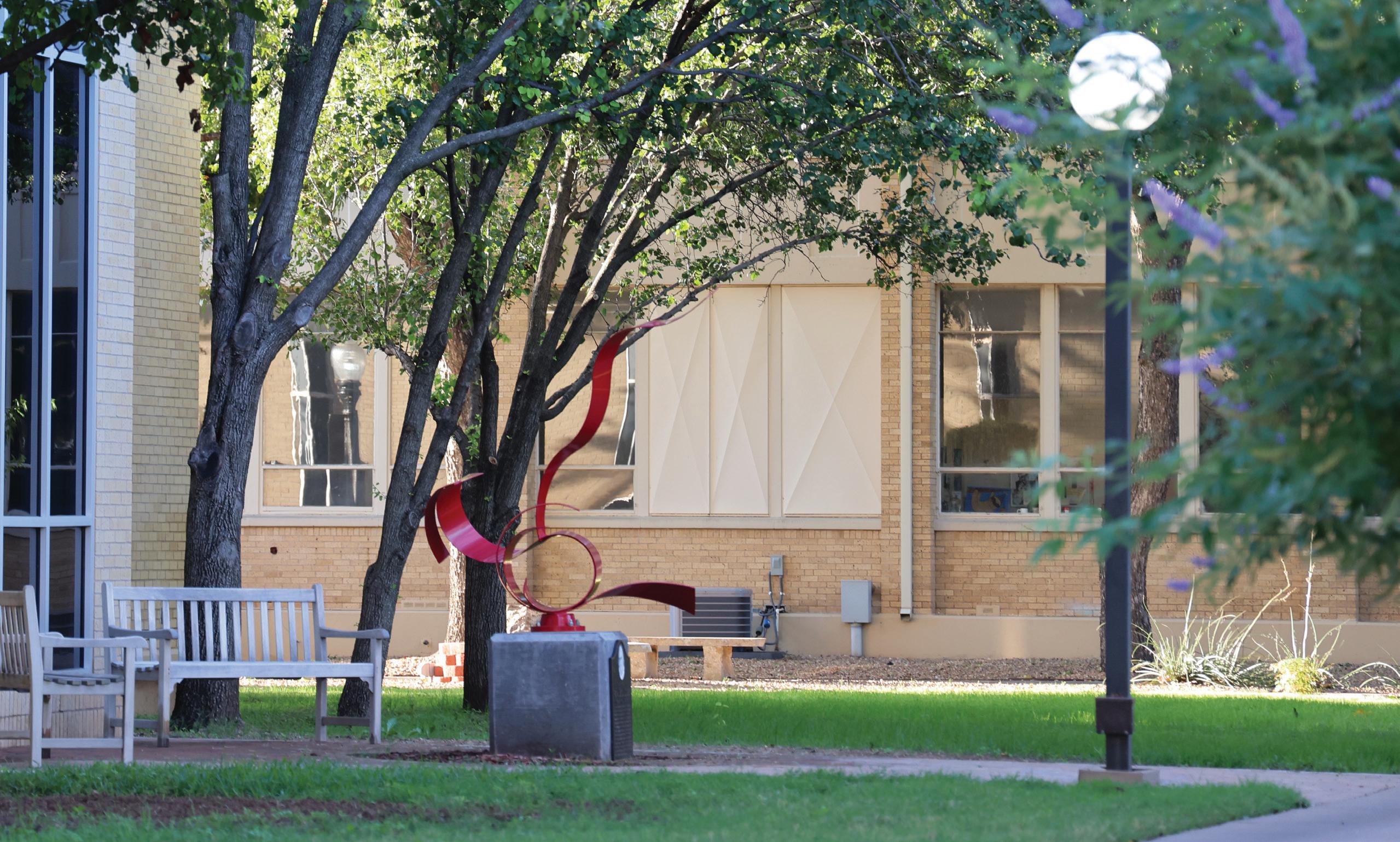
In her June 22, 2023, New York Times article “The U.S. Population Is Older Than Its Ever Been,” Dana Goldstein notes,
As the nation ages, it is also becoming more diverse. Between 2021 and 2022, the nation’s Asian population grew by 2.4 percent; the Hispanic population by 1.7 percent; the Black population by 0.9 percent; and the white population by 0.1 percent.
Americans are also having fewer children, so the declining birthrate is impacting the number of available traditional-aged college students.
Since 2020, some 1.23 million undergraduate students have disappeared from American colleges and universities, a 4% decline. This continued contraction in enrollment illustrates that the direct high school-tocollege market—which had filled seats on campuses for generations and steadily grew over those decades with new subsets of students—might have finally reached its peak (Clark and Cluver, “Trend No. 1”).

Nicholas Eberstadt and Evan Abramsky of the American Enterprise Institute observe that it will be critical for American higher education to reverse these enrollment headwinds in order to maintain the nation’s place in the world economy. Indeed, they note, “China and India are on track to overtake the United States in the percentage of working-age adults (aged 25 to 64) with post-secondary education in the next 10 to 15 years.” When analyzing the student enrollment decline, they explain:
The issue facing higher education now is not adequate demand among learners; it’s a mismatch of supply focused on a segment of students where demand is no longer growing. Figuring out how to continue to grow by reaching new populations of learners is a necessity not only for the financial sustainability of the sector in general but also for the nation as a whole. (“Trend No. 1”)
While many areas of the country are experiencing population decline, the state of Texas is experiencing and expecting explosive growth. Ten million more people are projected to be in Texas by 2036. The 2020 census revealed that the state’s Hispanic and white populations were nearly equal, with a mere difference of half a percentage point between them. By then, Texas had gained nearly 11 Hispanic residents for every additional white resident over the previous decade. And Hispanics had powered nearly half of the state’s overall growth of roughly 4 million residents since 2010. Hispanic Texans are expected to make up a flat-out majority of the state’s population in the decades to come, but they are already on the precipice of a majority among children. The latest census estimates showed that for 49.3% of Texans under the age of 18 are Hispanic. In raw numbers, Texas grew more than any other state over the past decade, and more than 95% of that growth was in communities of color. Due to the significant increase in diverse communities, the Texas Higher Education Coordinating Board (THECB) will be disaggregating its student success numbers and reporting them by race, gender, income level, and geographic area to monitor “that all goals are being advanced equitably and all Texans have an opportunity to succeed” (THECB).
In the five years before the COVID-19 pandemic, the number of Hispanic/Latino students and number of Asian students enrolling in higher education increased, while the number of white students trended downward; the number of African American/Black students saw virtually no change. Trends like these affect the makeup of the student population. In 2015, white students and Hispanic/Latino students represented nearly equal shares of roughly 36%. By 2020, they were separated by almost 8 percentage points, with Hispanic/Latino the most represented group (40.6%). This is despite each group comprising roughly 40% of the overall Texas population (United States Census Bureau).
As a percentage of overall population, Texas is 83.7% urban. Demographers project that the Dallas-Fort Worth Metroplex will reach 10 million people sometime in the 2030s, surpassing Chicago to become America’s third-largest metropolitan area.
This massive growth has not yet manifested itself in the state’s higher education enrollment, however. The higher education sector in Texas is still down 4.98% since the onslaught of COVID-19, although the downturn can primarily be attributed to the loss of enrollment at the Texas community colleges (Texas Higher Education Data).
The dialogue about the value of a college education is becoming inextricably linked with careers and workforce development. The cost of college and the amount of student debt incurred are also elements of the college value national discussion. Academic freedom and the teaching of divisive concepts are coming under attack as well.
Several states are no longer requiring a four-year degree for most jobs in state government, and many large companies such as Delta, General Motors, Google, Apple, and IBM are moving toward skills-based hiring (Sigelman). However, according to Jessica Blake’s June 22, 2023, article in Inside Higher Education, “The analysis shows that about 80 percent of colleges provide a minimum economic return that makes an undergraduate degree worth the investment.” The Blake article cites a 2023 report released by the Institution for Higher Education Policy (IHEP) that the college degree still has value for about 93 percent of students. The results of the analysis refute growing public perceptions that a college education or degree is not as valuable as it once was. Diane Cheng, IHEP’s vice president of research and policy and a lead author of the report, said
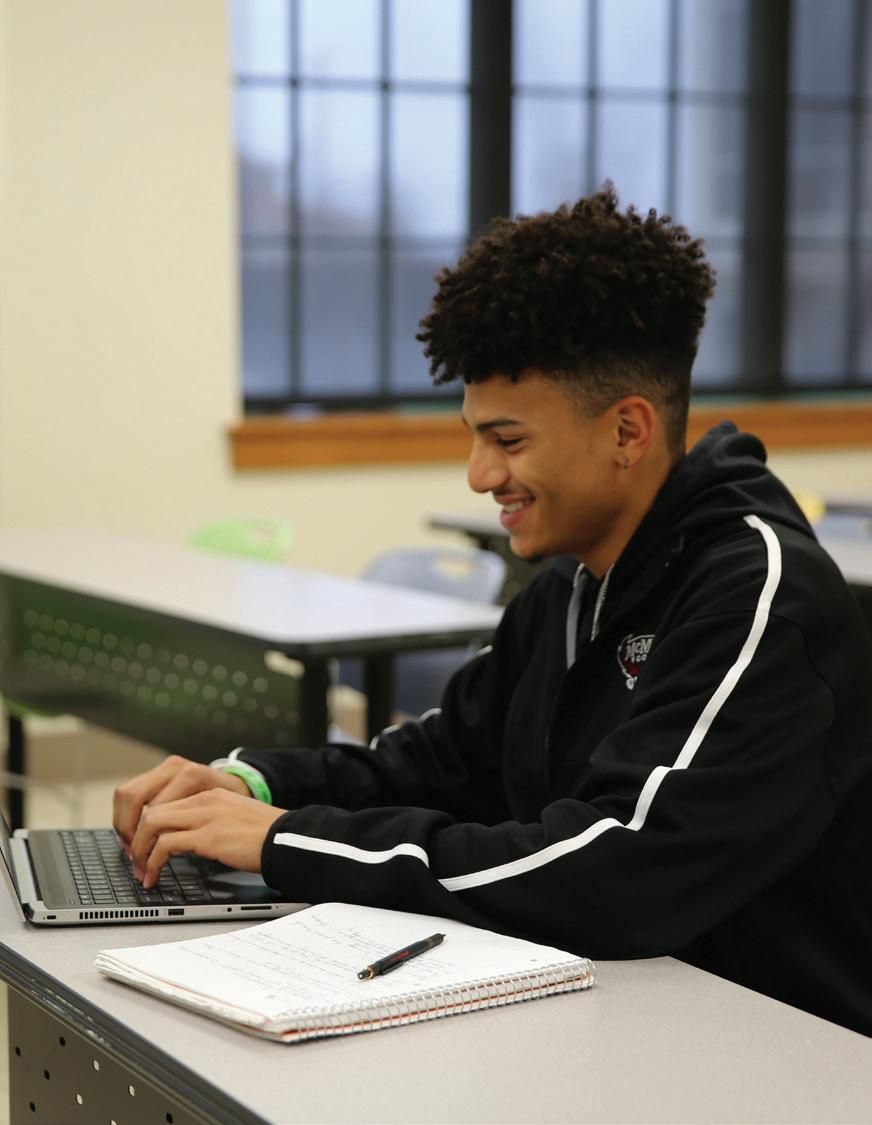
the findings align with past research. Cheng noted that some of the public doubt about college may stem from people not being aware of the data on return on investment and that others may define college value differently (Blake).
The most recent Fitch Ratings (2023) speculate about the smaller colleges’ enrollment strategies:
Colleges continue to face demand pressures from waning interest in liberal arts and a strong labor market, including an increase in jobs that do not require college credentials, along with questions around student debt and the value of a college degree amid a slowing economy. Smaller colleges in the northeast and midwest are under particular pressure due to decreasing high school graduates and outmigration.
The nexus between higher education and job attainment is evident in the new Texas Higher Education Coordinating Board (THECB) plan, “Building a Talent Strong Texas.” While many educators prefer to emphasize the intangible elements of the college experience and the long-term benefits of teaching students how to think, the state dialogue is crystallizing around a term “credentials of value.” The term is being defined as credentials that “offer purpose in the economy, value in the labor market, and opportunity for a good job and meaningful career” (THECB). The new state strategic plan for Texas higher education also expands the targeted population of students beyond the traditional-aged students to include potential adult learners, the nearly four million Texans with some college credit but no credentials. Reskilling and upskilling are encouraged in the plan.


Clark and Cluver note that the business model in higher education faces a full-scale transformation. They explain that, without a comprehensive understanding of cost and net revenue, “institutions could fail to grasp where strategic cuts can be made without damaging the academic core nor do they know where demand is shifting and how that intersects with what they’re good at or where they need to build institutional muscle by reallocating resources.” They describe the necessary shift in thinking in the following way:
Yet the opportunities for colleges and universities that shift their business model to a more student-centric one, serving the needs of a wider diversity of learners at different stages of their lives and careers, are immense. Politicians and policymakers are looking for solutions to the demographic cliff facing the workforce and the need to upskill and reskill generations of workers in an economy where the half-life of skills is shrinking. This intersection of needs—higher education needs students; the economy needs skilled workers—means that colleges and universities, if they execute on the right set of strategies, could play a critical role in developing the workforce of the future. For many colleges, this shift will require a significant rethinking of mission and structure as many institutions weren’t designed for workforce development and many faculty don’t believe it’s their job to get students a job. But if a set of institutions prove successful on this front, they could in the process improve the public perception of higher education, potentially leading to more political and financial support for growing this evolving business model in the future (“Trend #3”).
Clark, Cluver, and Jeffrey Selingo recognize another trend facing higher education: that of human development of their own workforce. They explain, “[colleges and universities] need to start designing an employee experience that matches the time, effort, and energy that they have put into the student experience. Doing so is critical not only for renewing the faculty and staff, but also for fueling the pipeline to senior leadership positions on campuses” (Clark et al, “Trend #4”). In her article for the 2023 President to President Series, Harper suggests, “Institutional viability or sustainability might only be possible through a deliberate focus on the workplace—with as much intentionality and energy as we have placed on recruiting, retaining, and graduating our students. Thus, the academic workplace must be a priority with appropriate resourcing—a difficult thing to accomplish in a period of strained capital.”
In the Jan. 27, 2022, a National Association of College and University Business Officers (NACUBO) report, “Rethinking the Higher Education Workplace in an Era of Transformation,” the College and University Professional Association for Human Resources (CUPA–HR) noted staff declines between 2019–2020 and 2020–2021 in service/maintenance (-4.1%), office/ clerical (-3.3%), and the skilled craft (-2%). The report suggests that institutions should pay attention to the changing dynamics in the academic workplace even if the demand for flexibility in in-person workplace standards may fly in the face of most institutions of higher education that pride themselves with an “up close and personal” approach between students and faculty and staff. The NACUBO report also cited a recent CUPA–HR study that higher education is currently suffering from negative perceptions by employees. Data showed that most employees ages twenty-five and younger have poor perceptions of the higher education culture and compensation. Indeed, CUPA–HR leaders Andy Brantley and Rob Shoemaker note, “Work from home opportunities during the last year have forced higher education to catch up to the corporate world in many aspects, including increased flexibility, better and more creative use of technology, and enhanced agility regarding decision-making and responsiveness to the changing world around us” (Harper).
In spring 2022, McMurry University faculty and senior administration began discussing many of the above trends and how they might relate to the University. The institutional effectiveness director convened focus groups consisting of both traditional and nontraditional students regarding the future of the university. The University faculty colloquium in August 2022 also was focused on the strengths, weaknesses, opportunities, and threats that are likely to be exhibited or experienced by McMurry in its second century of existence. The board of trustees, under the leadership of current Board Chair Kathi Edwards, continued its understanding of shared governance and how the alignment of strategic priorities needs to be foremost in the planning process. Board Chair Edwards appointed a Strategic Planning Task Force, chaired by Trustee Austin Pittman. This group periodically met with the University president at crucial intervals throughout the planning process so that the alignment would occur. President Harper hosted 13 different strategic planning sessions on campus open to any employee to discuss the macrotrends and the strategic framework that was being developed. These sessions included 118 individuals. Other groups such as the Research Assessment and Planning Council, the University Leadership Team, the Board of Visitors, and the Alumni Board were tapped for their feedback and guidance. Finally, the board of trustees devoted its entire retreat agenda in June 2023 to discussing the draft that was presented to them. Retreat attendees provided feedback for the upcoming iterations of the plan.
Within this yearlong preparation involving virtually every group and individual who wanted to be engaged in the process, the University community engaged in a thirty-day comment period from June 26-July 26, 2023. The President’s Cabinet reviewed the comments and incorporated those that related to the themes of the plan. The cabinet then developed the timeline and metrics of success for The Second Century Strategic Pillars. The Research Assessment and Planning Council reviewed the document and provided feedback. Finally, the Board of Trustees Strategic Planning Task Force determined when the document was ready to be reviewed by the entire board of trustees.
The following sections contain the McMurry Identity and Vision 2030 (gleaned from the discussions about what McMurry is today, in 2023, and what McMurry should be in 2030) and what major strategic pillars need to be addressed in order to achieve that vision.
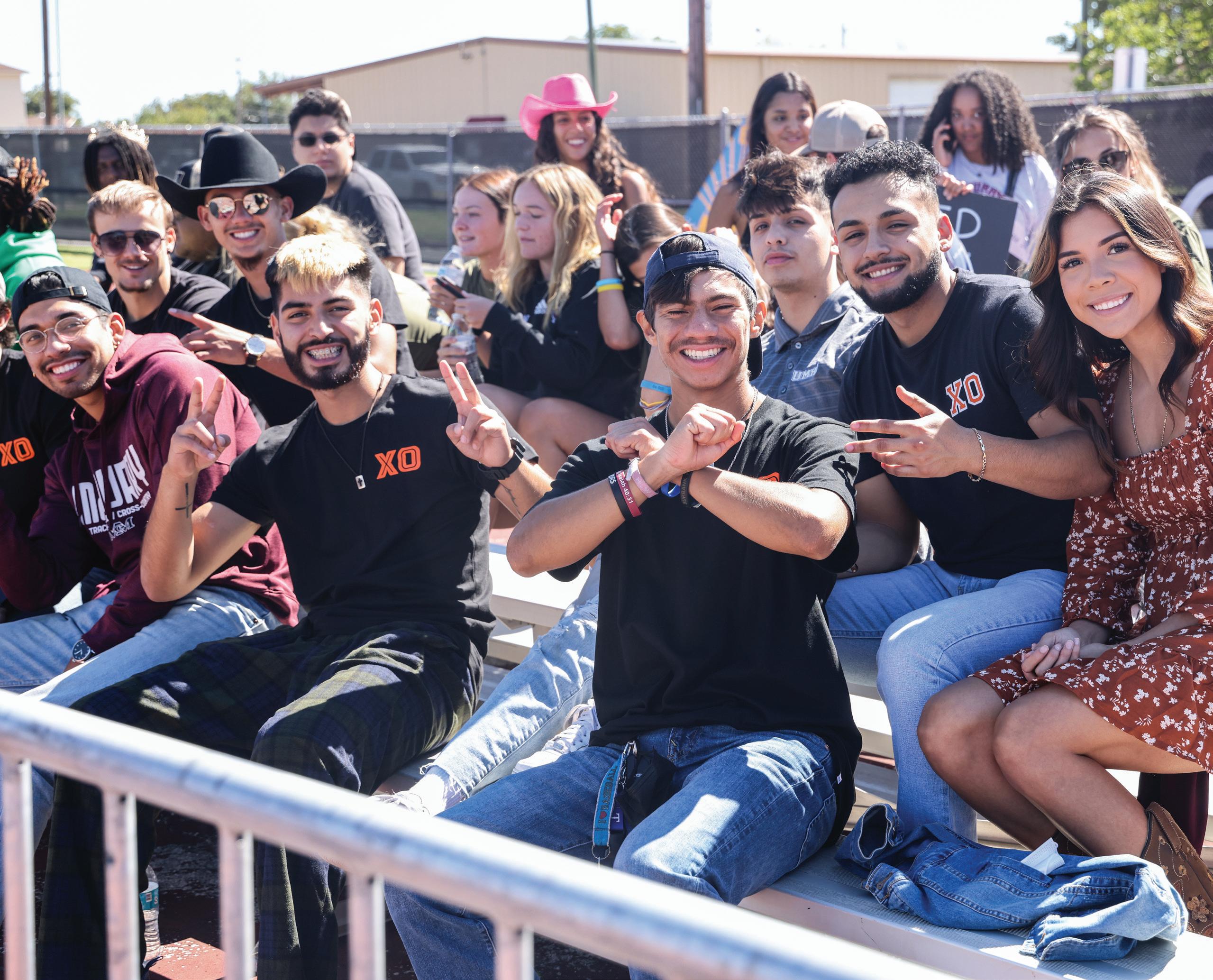
McMurry University is:
• an accessible private academic institution that empowers and prepares individuals to manage complexity, diversity, and change;
• a great place to work with great people who are building a student-centered community that is relationship-based and focused on learning, undergraduate research, scholarly and creative activity, extracurricular activities, and intercollegiate athletics;
• a welcoming, caring, supportive, inclusive United Methodist institution emphasizing the opportunity for spiritual reflection and growth;
• a growing, innovative academic community focused on service and student engagement informed by the principles of servant leadership.
Transforming lives in a diverse environment, McMurry University exists to empower students through Christian faith, learning, excellence, and service.
To continue to achieve this enduring purpose by 2030, McMurry will:
• exhibit Christian values that affirm the inherent worth of every human being, uphold the dignity of learning, and sustain a culture of belonging where all can participate, prosper, and reach their full potential;
• expand program types and degree modalities to attain a consistent enrollment of at least 2,645 full-timeequivalent (FTE) students;
• be known for the excellence and integrity of its academic and athletics programs and the professional success of its students, graduates, faculty, and staff;
• be recognized as the leading small private university of the Western Plains because of its transformational work in social mobility and its commitment to expanding an educated American middle class.
McMurry students will be held to standards of professional excellence, personal responsibility, and discipline and will participate in high-impact practices throughout their college careers. McMurry employees will embody the core value of excellence by holding themselves and their colleagues to outstanding performance while developing the flexibility and resilience to deal with change, challenge, and uncertainty. McMurry graduates will be expected to be servant leaders and lifelong learners, constantly striving for excellence and contributing to our multifaceted society in meaningful ways.
Attaining this vision will inspire McMurry’s constituencies to support and sustain its momentum through the remainder of its second century.

McMurry will fulfill this vision by identifying and implementing The Second Century Strategic Pillars that will transform the University both internally and in relation to its external constituencies.
The following are the five pillars upon which all activity for the next seven years must be focused:
I. Enhance institutional self-esteem and community perception by increasing the frequency and quality of internal and external messaging.
II. Advance academic program development that is mindful of vital skills that are needed for the twenty-first century workplace and will lead to the professional success of McMurry graduates. These skills include oral communication, critical thinking, ethical judgment, working effectively in teams, working independently, self-motivation, written communication, servant leadership, cultural competence, and real-world application of skills and knowledge.
III. Recruit, retain, and graduate a diverse student body by developing engaged learners with the propensity to connect proactively in their communities.
IV. Recruit, retain, advance, and develop a diverse and engaged McMurry faculty, staff, and administration by investing in employee talent attraction, alignment, and a culture of belonging.
V. Enhance McMurry’s financial stability and long-term viability through investment, development, and acquisition of traditional and alternative revenue streams, as well as through intentional acquisition and management of its physical and technical resources.
"No one after lighting a lamp puts it under the bushel basket, but on the lampstand, and it gives light to all in the house. In the same way, let your light shine before others, so that they may see your good works and give glory to your Father in heaven” (Matt. 5.15-16).
After one-hundred years of educating students in West Texas, McMurry University needs to share its message more vibrantly than it has in the past. The Second Century Strategic Pillar I emphasizes the need to believe in ourselves and to share the vitality of the institution and the McMurry experience.
I. Enhance institutional self-esteem and community perception by increasing the frequency and quality of internal and external messaging.
A. Transition from a problem-solving to a creating-the-vision mentality.
B. Provide an ongoing program of building community with McMurry employees.
C. Highlight innovations and initiatives that make McMurry a cutting-edge institution.
D. Draw attention to established programs that resonate with the external community (i.e., community commitment and the ability to audit classes) and integrate McMurry representatives into significant community boards and advisory groups.
E. Recognize how different University constituencies consume messages and tailor the messaging accordingly.

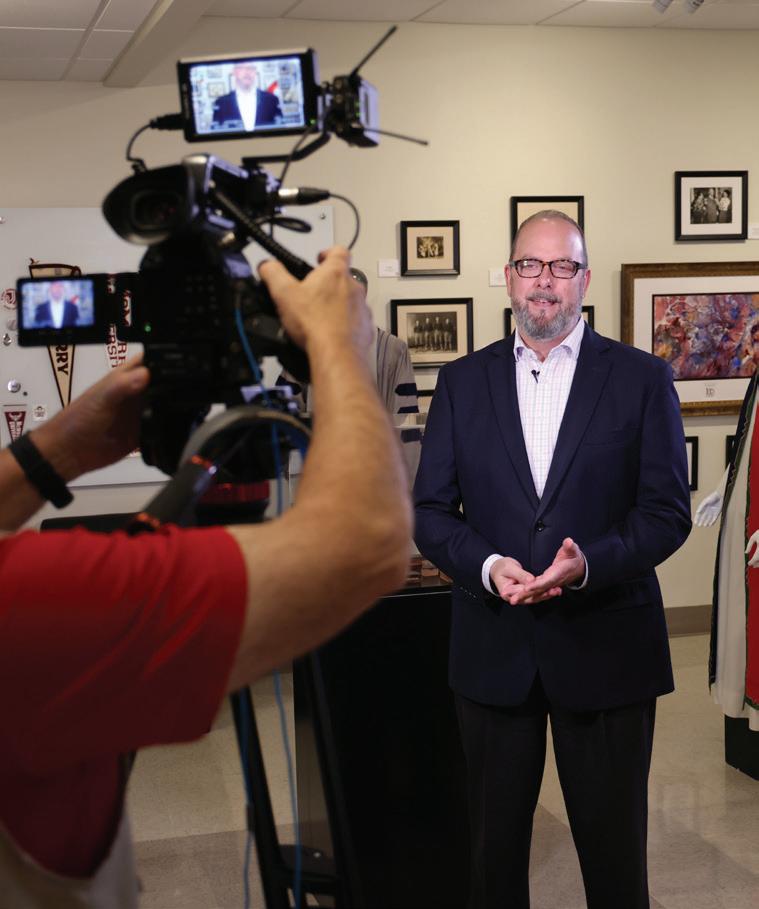


“Whatever is true, whatever is honorable, whatever is right, whatever is pure, whatever is lovely, whatever is of good repute, if there is any excellence and if anything worthy of praise, dwell on these things” (Phil. 4.8).
Because of the competitive environment that the University will be facing in the next decade, it is imperative to thread vital skills into the curriculum, partner with other entities to maximize our resources, develop a transformative student experience and academic and co-curricular programming, and amplify professional development for those who serve the University’s students. Pillars II, III, and IV focus on the implementation of these vital concepts.
Christian Faith as the Foundation of Life is a core value of McMurry University as a United Methodist-related institution. Our commitment to welcoming, educating, and preparing students from diverse backgrounds to serve their neighbors stems from the Christian and Wesleyan identity of the University. Our commitment to an atmosphere of free and rigorous academic inquiry likewise arises from the bedrock belief that, in a universe created by God, the truth is nothing to fear. McMurry boldly affirms that Methodism is an integral dimension of both the story of our cherished past and our bright hope for the future. The spiritual vision that has guided McMurry since its founding will continue to inform how we prepare students for vocations in which they will act ethically and contribute to the flourishing of their society.
Coupled with the aforementioned core value, the core mission of an institution of higher education is to enhance learning. Twenty-first century core competencies that blend communication skills and technological prowess with the principles of servant leadership will be the foundation of the McMurry University academic program in its second century. Academic program development, enrollment management, talent acquisition, and professional development will be a constant focus. The tactics for Strategic Pillars II, III, and IV are described on the following pages.
II. Advance academic program development that is mindful of vital skills that are needed for the twenty-first century workplace and will lead to the professional success of McMurry graduates. These skills include oral communication, critical thinking, ethical judgment, working effectively in teams, working independently, self-motivation, written communication, servant leadership, cultural competence, and real-world application of skills and knowledge.
A. Build on the foundation that all McMurry departments contribute to developing these vital skills by investing in current programs that are likely to grow based on student demand, labor statistics, and state and national needs (e.g., business, education such as aides to teach at the secondary level and secondary science and mathematics, nursing, and STEM), as well as programs associated with academic excellence and the unique culture of McMurry such as the honors, servant leadership, and religious and spiritual life programs.
B. Establish strategic partnerships leading to program development and career pathways with organizations like Abilene Independent School District, Wylie Independent School District, Cisco College, Texas State Technical College, Texas Workforce Commission, the Abilene Chamber of Commerce, First Financial Bank, Hendrick Health System, Funeral Directos Life Insurance Company, Eljen Technology, Blue Cross Blue Shield, Dyess Air Force Base, Great Lakes Cheese, and other major employers in Texas.
C. Identify modes of delivery and credentials that appeal to both traditional students and adult learners.
1. Identify new undergraduate, virtual/hybrid, and graduate programs to develop. An MBA, healthcare completion degrees, clinical lab sciences, and sports-related degrees (including sports media) are possible options, as well as associate degrees like the associate degree in nursing (ADN), licensed vocational nurse (LVN) to Bachelor of Science in nursing (BSN) pathway, the second degree accelerated nursing option, and others emerging from the Patty Hanks Shelton School of Nursing (PHSSN) strategic planning effort.
2. Promote the current interdisciplinary degree and create cross-disciplinary and interdivisional programs, particularly between the arts and humanities and other professionally oriented divisions that prepare students for the creative thinking, technical skills, and character building needed in the workplace.
3. Develop credentials and calendars of shorter duration (e.g., micro-credentials, certificates, and modules).
4. Monitor artificial intelligence and determine how this tool should be used throughout the curriculum in instruction, identifying learning outcomes, and determining academic honesty.
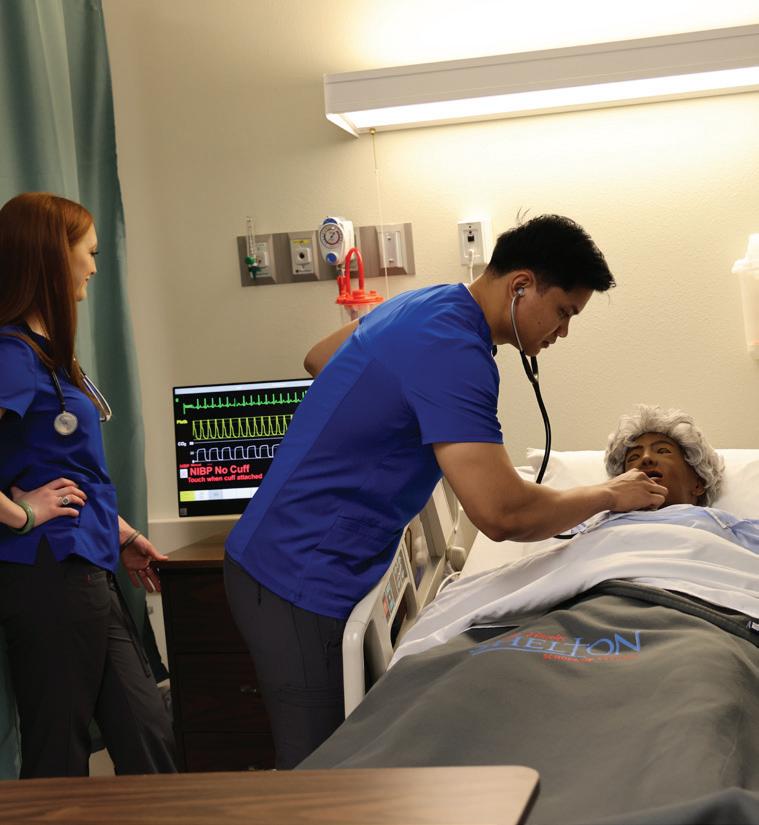


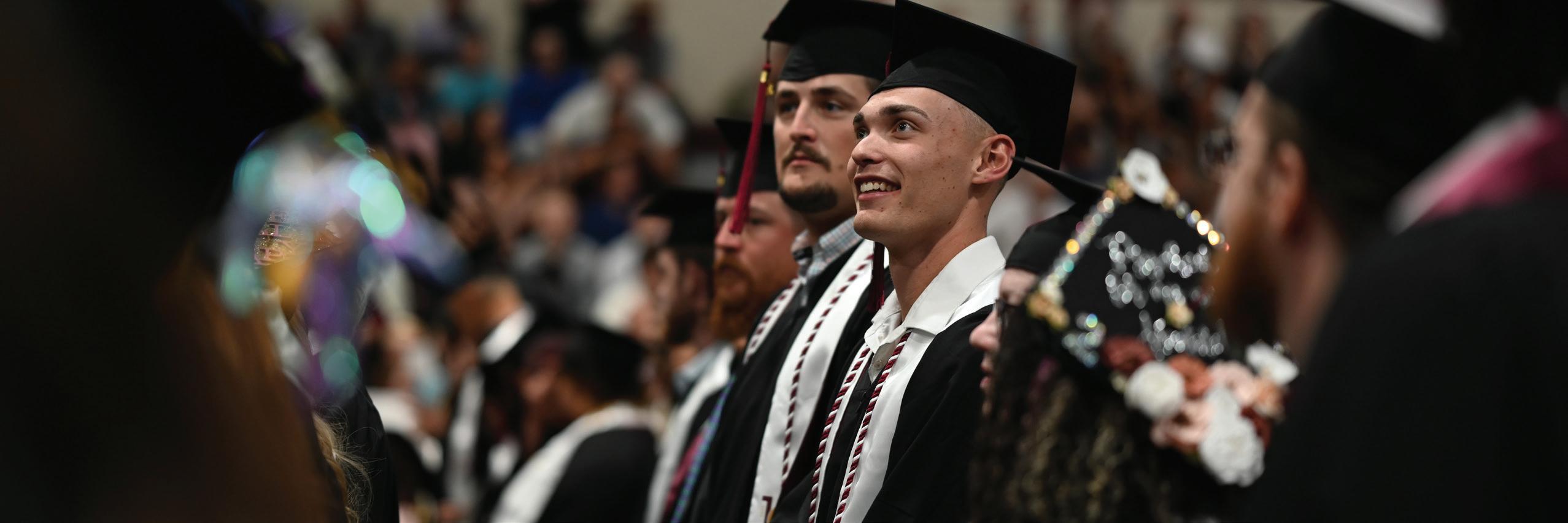
III. Recruit, retain, and graduate a diverse student body by developing engaged learners with the propensity to connect proactively in their communities.
A. Achieve a 2,645 FTE student count with a mixture of residential, commuter, distance, micro-credential, and dual credit academy students.
B. Continue efforts that lead to increases in recruitment, retention, and graduation rates of both first-year and transfer students by investing in student affairs and intercollegiate athletics, with improvements in staffing, event planning, student engagement, and mental health support.
C. Establish a culture of belonging that encourages connections between people of varying circumstance, cultures, languages, and beliefs by developing and supporting a pronounced focus on the McMurry student experience for the traditional, adult, and digital student populations.
1. Reorient campus staffing and operational hours to better serve the adult and digital student populations.
2. Achieve the Seal of Excelensia (see Appendix B).
3. Outline and implement tactics to increase retention and graduation for all segments of the student population.
D. Promote co-curricular activities beyond the classroom, such as the University Symposium, study abroad, study away, and experiential learning.
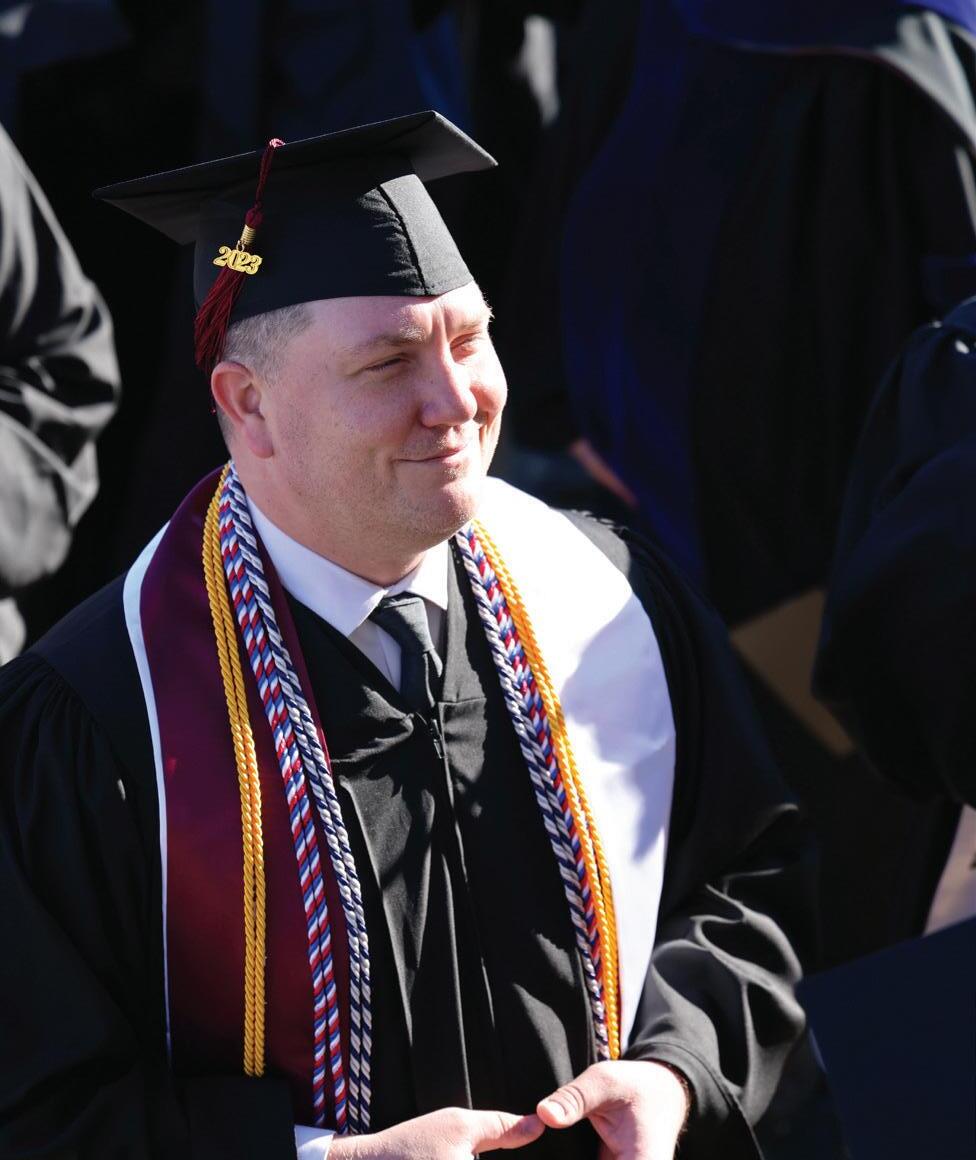
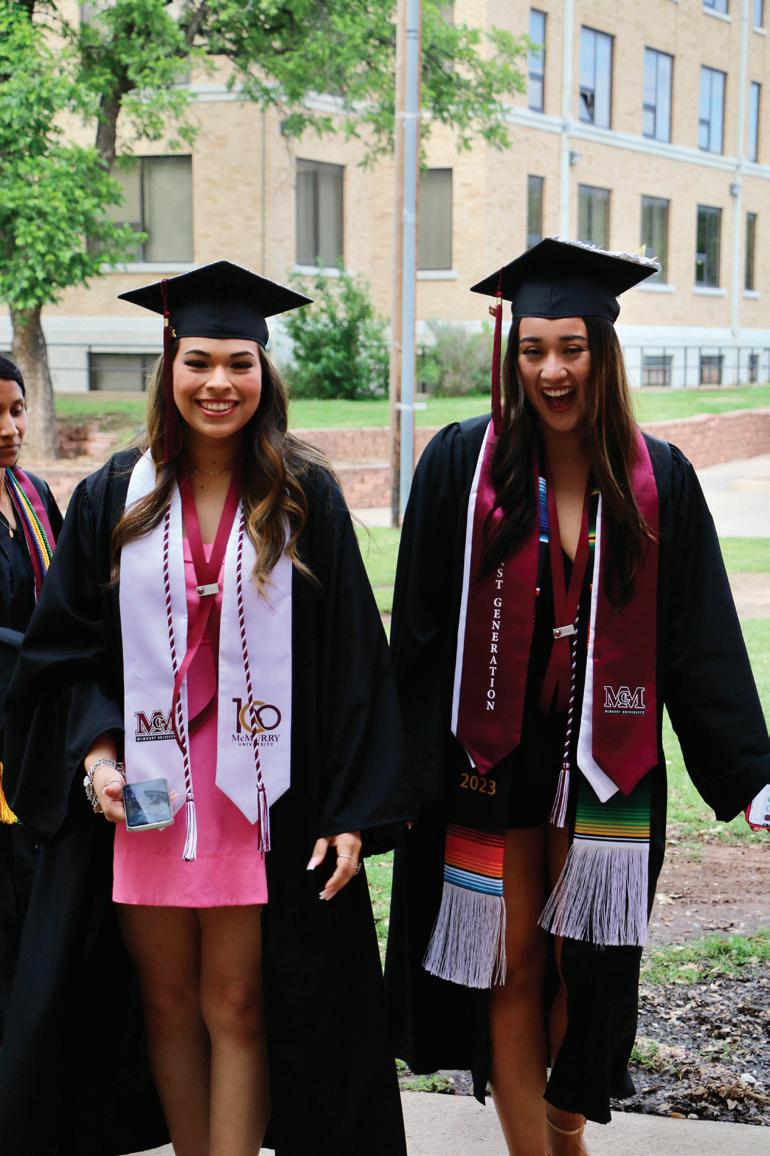

IV. Recruit, retain, advance, and develop a diverse and engaged McMurry faculty, staff, and administration by investing in employee talent attraction, alignment, and a culture of belonging.
A. Launch Leadership McMurry, which includes internal development of emerging leaders, guiding faculty through the tenure process (including mentorship with research, scholarly, and creative activity), career development programs, support for additional credentials needed for career advancement, and ongoing supervisor training.
B. Achieve competitive compensation and benefit packages with similarly situated universities using CUPA–HR data as a benchmark.
1. Establish a minimum salary for a full-time assistant professor and instructor.
2. Expand the automatic salary increases that are received when being promoted through the academic ranks.
3. Explore a staff hierarchy similar to the ranking system in the professoriate.
4. Continue increasing annually the lowest hourly employees’ wages with the expectation that this group will reach a living wage (by federal government definition).
5. Prioritize cost-of-living increases in upcoming budgets.
6. Increase adjunct faculty pay to be competitive to attract contingent faculty.
C. Shape the McMurry workforce to more closely resemble the McMurry student body.
1. Commit to support McMurry BIPOC (Black, Indigenous, People of Color) students to pursue graduate studies and return to serve McMurry.
2. Develop a language competency initiative such that a significant portion of the faculty, staff, and administration become competent in the Spanish language.
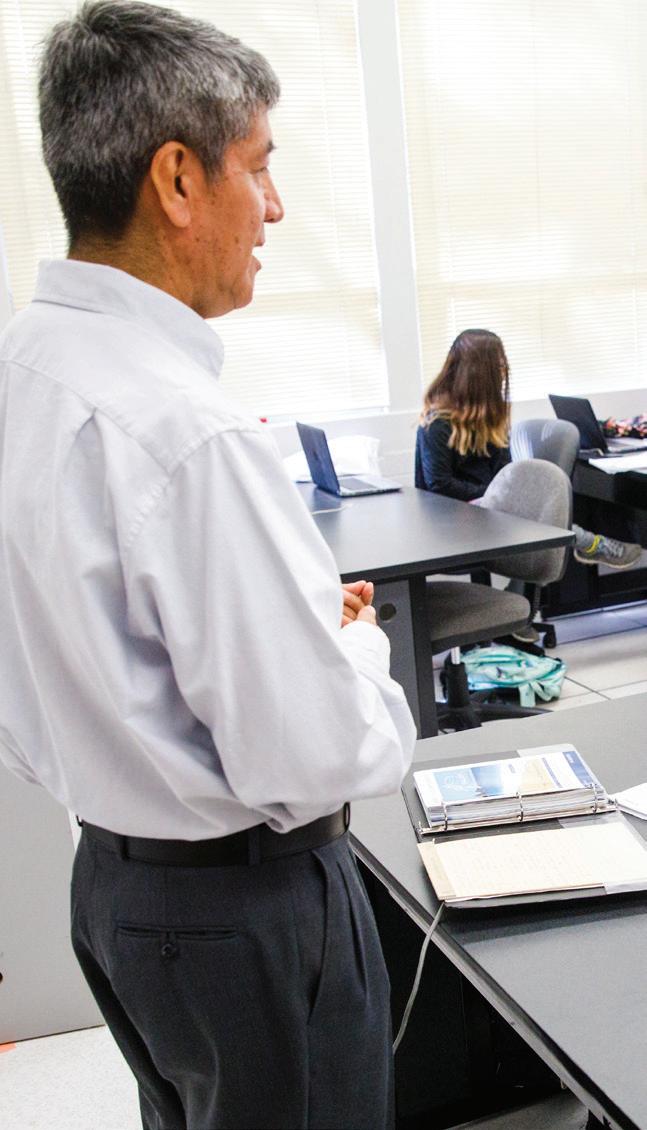

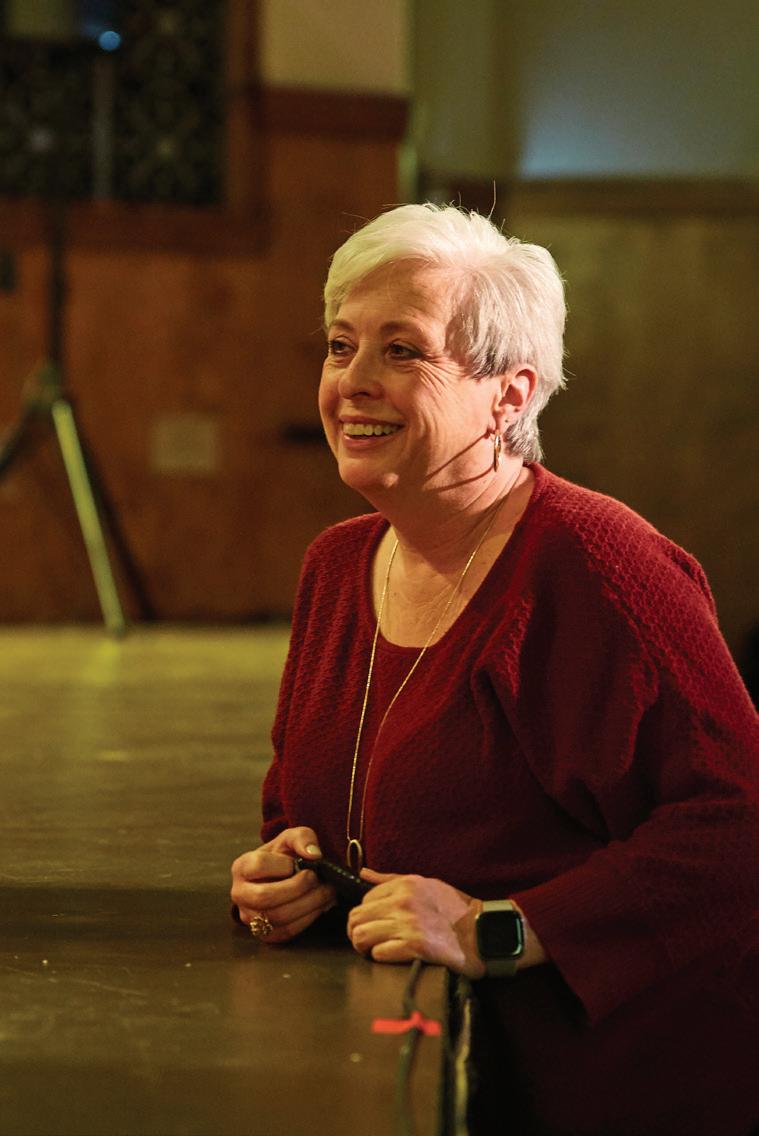
“To give away money is an easy matter and in any man’s power. But to decide to whom to give it and how large and when, and for what purpose and how, is neither in every man’s power nor an easy matter.” —Aristotle
While many educators chafe at calling higher education a business or an industry, it is. It takes resources to recruit, educate, house, and support students. It takes resources to attract and retain faculty, staff, and administrators. It takes resources to maintain safe, functional, and aesthetically pleasing facilities.
Pillar V describes the importance of acquiring and managing the institution’s financial, technological, and physical resources responsibly and effectively in order to support the first four pillars of The Second Century plan and to ensure the long-term financial viability of the institution.
V. Enhance McMurry’s financial stability and long-term viability through investment, development, and acquisition of traditional and alternative revenue streams, as well as through intentional acquisition and management of its physical and technical resources.
A. Develop a strategy for endowment management to increase the endowment and to augment strategic reserves.
B. Increase net tuition revenue and maximize room and board revenue.
C. Prioritize costs to align with the strategic plan and reinforce budget accountability.
D. Support institutional advancement such that funding institutional priorities can be planned and executed.
E. Review the significant elements of the Campus Master Plan, especially regarding the future of President’s Hall and the Cooke Building, an increase in athletics and intramural facilities, practice fields, arts facilities, deferred maintenance, and a more walkable campus with a trail around the campus perimeter. It is important to promote entrepreneurial development of the businesses surrounding the campus by identifying McMurry alumni, strategic partners, and/or community block grants to create a vision for the campus perimeter.
F. Invest in technology and data analysis to automate significant processes and provide a foundation for more informed decision-making.
G. Establish administrative and academic structures that are nimble and able to support alternative revenue streams, with special thought given to the support needed for the McMurry Dual Credit Academy, the Office of Sponsored Programs and Research Compliance, and other academic innovations.
H. Expand the shared services model through consortia and/or strategic partnerships.
I. Determine how artificial intelligence might expedite the efficiency of important University processes.
In order to achieve Vision 2030 and The Second Century Strategic Pillars, the McMurry University community must commit to the creation of a philanthropic spirit and the discipline to implement the key actions outlined in this plan. Similarly, achieving the Seal of Excelencia as a tangible acknowledgment of McMurry’s transformational work in social mobility and its commitment to expand an educated American middle class is described in Appendix B.
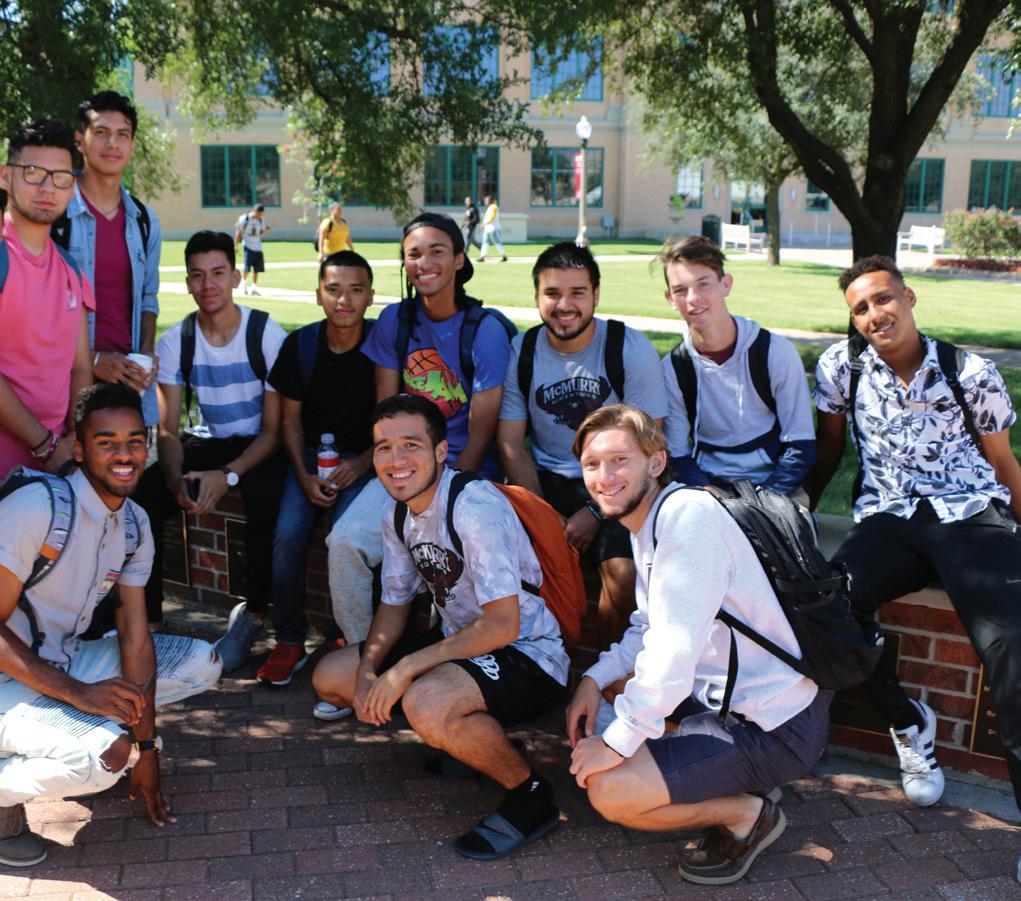


Shaped by Christian principles, McMurry University challenges students to examine our complex world from multiple perspectives in preparation for lives of leadership, service, and professional success.
The University fulfills this mission by fostering a campus culture that is distinctive in the following ways:
McMurry is shaped by Christian principles.
As a United Methodist institution grounded in traditions of intellectual achievement and vital piety, McMurry nurtures and cares for students as they face the many challenges of higher education. The institution provides the support necessary to encourage students to grow as whole persons—spiritually, emotionally, morally, intellectually, socially, and physically. The McMurry community expresses its Christian principles through hospitality and gracious interactions with those who do and those who do not identify with the Christian faith. The institution encourages connections between people of varying circumstances, cultures, languages, and beliefs.
McMurry challenges students to examine our complex world from multiple perspectives.
The goal of a McMurry education is to provide the foundation for an examined, informed, and purposeful life. To that end, academic programs encourage students to build on the broader curricular experience and integrate the various disciplines’ core ideas while developing fundamental skills in communication, analysis, and reasoning. McMurry strives to create an environment in which students can examine their own and others’ perspectives to become, not simply consumers of knowledge, but sophisticated producers of knowledge connected to a global world. Such an environment better prepares women and men of all backgrounds to engage others in working toward the common good.
McMurry prepares students for lives of leadership, service, and professional success.
Through its curricular and extracurricular opportunities, McMurry gives students practical experience in leadership and service. The institution places particular importance on servant leadership, an approach that focuses on empowering followers by encouraging and supporting the growth of others. The university develops servant leaders who seek to transform communities through listening first, emphasizing excellence and empathy, and inspiring an attitude of service. McMurry graduates have a solid basis for achievement in their religious, civic, professional, and family communities. McMurry expects its alumni to perform as servant leaders in diverse and complex environments and to use their leadership skills for the betterment of community and society.
Excelencia in Education’s mission is to accelerate Latino student success in higher education. We believe institutions must transform to address structural inequities and more intentionally serve Latino, and other post-traditional students. To focus on this, Excelencia in Education established the Seal of Excelencia , a national certification for colleges/universities that strive to go beyond enrollment and more intentionally SERVE Latino students to become institutions where Latinos thrive.
Excelencia is committed to partnering with institutions to share and learn strategies that align data, practice, and leadership to accelerate Latino student success as a community of common cause. Further, we recognize that developing the ability to serve Latino students enhances the capacity of institutions to serve all students.
Excelencia developed a framework that integrates essential components of transformation into a comprehensive institutional strategy for intentionally SERVING Latino students. This framework represents learning from over 20 years of working with higher education institutions and leaders committed to student success.
The Seal of Excelencia framework has three core components: data, practice, and leadership.
Data: Institutions collect, disaggregate, and analyze data for impact among six key data areas :
1. Enrollment of Latino students;
2. Retention of Latino students;
3. Transfer in and out of Latino students;
4. Financial support for Latino students;
5. Representation of Latinos in administration, faculty, and staff to further model success; and,
6. Degree completion of Latino students.
Practice: Institutions intentionally implement and advance evidence-based programs and policies for equitable outcomes in six key practice areas :
1. Enrollment of Latino students;
2. Retention of Latino students;
3. Transfer in and out of Latino students;
4. Financial support for Latino students;
5. Representation of Latinos in administration, faculty, and staff to further model success; and,
6. Degree completion of Latino students.
Leadership: Institutions demonstrate intentional commitment to improve Latino student success in five leadership areas :
1. Mission and strategy – where aspects of the institution’s mission and strategy are articulated and implemented to intentionally include Latino students’ success.
2. Data and practice – how disaggregated data (by race and ethnicity) and institutional practices are aligned to inform initiatives that improve Latino student success.
3. Human resources – how recruitment, onboarding, and professional development (especially for faculty) prioritize serving Latino students and the institutional community.
4. Communications – where internal and external communications are leveraged to share information making the intentionality to serve Latino students clear. This can keep momentum building toward goals set by the college and across the institution and community.
5. Institutional culture – how the institution articulates authentically its intentionality in SERVING Latino students, including how students are cultivated and supported.
Blake, Jessica. “Is College Worth it? Recent Analysis Says Yes.” Inside Higher Education, 22 June 2023.
Brantley, Andy, and Rob Shoemaker. “What’s Next for the Higher Education Workforce? A Look at the Challenges and Opportunities That Lie Ahead.” College and University Professional Association for Human Resources, Spring 2021, www.cupahr.org/issue/feature/whats-next-for-the-higher-ed-workforce/.
Clark, Cole and Megan Cluver. “Trend No. 1: College Enrollment Reaches Its Peak,” Deloitte Insights, 17 May 2023.
––. “Trend #3: The Business Model Faces a Full Scale Transformation,” Deloitte Insights, 17 May 2023.
Clark, Cole, et. al. “Trend #4: Talent Management Becomes a Strategy,” Deloitte Insights, 17 May 2023.
Downs, Fane and Robert Sledge, editors. Pride of Our Western Prairies, McMurry College 1923-1988. Eakin Press, 1989.
Eberstadt, Nicholas and Evan Abramsky, “The Changing Global Distribution of Highly Educated Manpower, 1950–2040: Findings and Implications.”American Enterprise Institute, 28 April 2022, www.aei.org/research-products/report/thechanging-global-distribution-of-highly-educated-manpower-1950-2040-findings-and-implications/
Fitch Ratings. “Success of Smaller Colleges’ Enrollment Strategies Not Guaranteed.” 8 Jun. 2023, www.fitchratings.com/research/us-public-finance/success-of-smaller-colleges-enrollment-strategies-notguaranteed-08-06-2023 Goldstein, Dana. “The U.S. Population is Older than its Ever Been.” New York Times, 22 June 2023.
Harper, Sandra. “Talent Management as a Tool for Institutional Sustainability.” President to President Series, 2023.
––. Presentation. “The Next Thirty, The Next Three.” McMurry University Board of Trustees, June 2020, Abilene, Texas.
National Association of College and University Business Officers. “Rethinking the Higher Education Workplace in an Era of Transformation.” A part of NACUBO’s State of Higher Education Series, 8 Jan. 2022, www.nacubo.org/Advocacy/ State-of-Higher-Education/Rethinking-the-Higher-Education-Workplace.
Sigelman, Matt, et al. “Making the Bachelor’s Degree More Valuable.” Burning Glass Institute, 21 March 2023.
Swanger, Dustin. “The Future of Higher Education in the U.S.: Issues Facing Colleges and Their Impacts on Campus.” SUNY Digital Repository, July 2018.
Texas Higher Education Coordinating Board. “Building a Talent Strong Texas.” 2023, www.highered.texas.gov.
Texas Higher Education Data. www.txhighereddata.org.
United States Census Bureau, 2022.